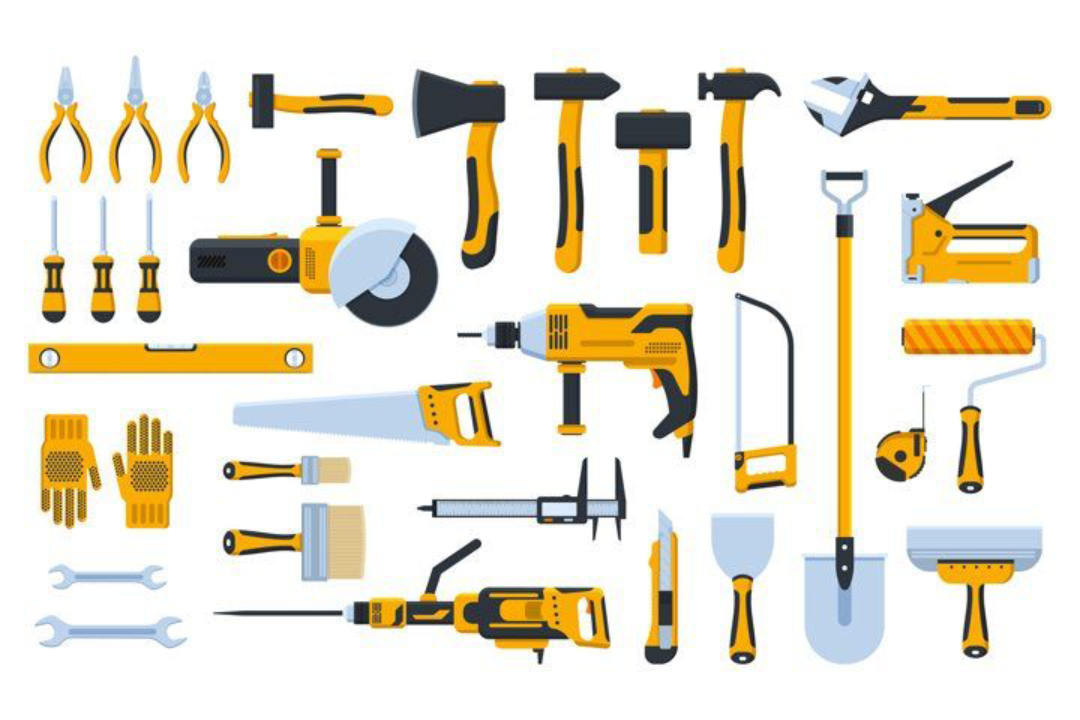Building Momentum: The Construction Equipment Financing Revival in 2022
In the dynamic world of construction equipment financing, 2022 was a tale of two halves. The year began with a hesitant and slow start, primarily attributed to the challenges posed by rising interest rates and economic uncertainties. However, the second half of 2022 witnessed a remarkable resurgence in the construction equipment financing industry. As we embark on 2023, it’s imperative to reflect on the dramatic fluctuations and pivotal factors that shaped the industry’s fortunes.
Revival Amidst Challenges
The construction equipment financing sector encountered its fair share of hurdles during the initial months of 2022. A significant impediment was the relentless surge in interest rates, which sent ripples of caution through the construction community. With higher interest rates translating into increased borrowing costs, many construction firms approached financing with trepidation, leading to a noticeable decline in financing activities.
Moreover, the economic landscape was rife with uncertainty. Concerns such as inflation and persistent supply chain disruptions cast shadows over the construction industry. In the face of these challenges, businesses were understandably cautious about making substantial financial commitments, further contributing to the industry’s sluggishness.
The Resilient Rebound
However, as the year unfolded, the construction equipment financing sector made a remarkable comeback in the latter half of 2022. Several key factors converged to reignite the industry’s vitality.
A pivotal factor in this resurgence was the anticipation of interest rates stabilizing in the near future. As the Federal Reserve signaled its intent to address the escalating rates, construction companies regained their confidence in exploring financing options. This newfound optimism translated into a significant upswing in financing activity.
Furthermore, the construction industry itself remained buoyant, particularly in the realm of infrastructure spending. Ambitious infrastructure projects and a steadfast commitment to construction efforts continued to drive the demand for construction equipment. This, in turn, fueled the need for financing to support these projects, contributing significantly to the industry’s revival.
The second half of 2022 offered a more favorable economic environment, with construction firms adapting to the post-pandemic landscape. As businesses adjusted to this new normal, the construction equipment financing sector regained its momentum.
A Glimpse into 2023
As we stand at the threshold of 2023, it is crucial to learn from the experiences of 2022. While the construction equipment financing industry navigated turbulent waters, its resilience and adaptability ultimately prevailed. With a more stable interest rate outlook, ongoing infrastructure investments, and the persistent demand for financing solutions within the construction sector, the stage is set for a promising year ahead. Nonetheless, the specter of broader economic conditions serves as a reminder of the need for cautious optimism in the construction equipment financing landscape.
The Sluggish First Half

The first half of 2022 proved to be a challenging period for the construction equipment financing industry. Several factors contributed to this sluggishness, casting a shadow over the sector’s performance:
1. Rising Interest Rates: One of the primary culprits behind the industry’s slow start was the relentless ascent of interest rates. The construction sector relies heavily on financing to acquire and upgrade equipment, and higher interest rates can substantially increase the cost of borrowing. As rates continued to climb, many construction firms adopted a cautious stance, delaying or reconsidering their financing plans. This phenomenon resulted in a noticeable dip in financing activity during this period.
2. Economic Uncertainties: The broader economic landscape was marked by uncertainty in the first half of 2022. Concerns about inflation, supply chain disruptions, and the potential impacts of these factors on the construction industry added to the apprehension. Businesses across the construction spectrum, from large infrastructure projects to smaller contractors, approached financing decisions with caution. The uncertain economic environment made companies hesitant to commit to significant financial obligations.
3. Hesitancy to Invest: In the face of these challenges, many construction businesses were hesitant to invest in new equipment or expand their fleets. This hesitancy translated into reduced demand for equipment financing solutions, further contributing to the industry’s subdued performance in the first half of the year.
4. Adaptive Measures: Some construction companies took adaptive measures during this period. They focused on optimizing their existing equipment, improving operational efficiency, and carefully managing their budgets in response to the uncertain economic conditions. While these strategies were prudent, they often translated into reduced demand for new equipment and financing options.
The cumulative effect of these challenges led to a slow start for the construction equipment financing industry in 2022. However, the resilience of the industry and the adaptation of businesses set the stage for a remarkable turnaround in the second half of the year, as we will explore in the following sections.
The Resurgent Second Half
The second half of 2022 marked a notable turnaround for the construction equipment financing industry. After a challenging start to the year, the sector experienced a resurgence characterized by renewed confidence and increased activity. Several key factors contributed to this remarkable recovery:
1. Anticipated Interest Rate Stabilization: One of the primary drivers of the industry’s resurgence was the anticipation of interest rates stabilizing in the near future. As the Federal Reserve signaled its intention to address the rising interest rates, construction companies gained a renewed sense of confidence in exploring financing options. The expectation of a more stable interest rate environment relieved some of the cost concerns associated with borrowing for equipment.
2. Continued Infrastructure Investments: Infrastructure spending remained a robust driver of the construction industry throughout the year. Ambitious infrastructure projects at the federal, state, and municipal levels created sustained demand for construction equipment. With these projects requiring significant machinery and equipment, the need for financing solutions became more pronounced. This continued commitment to infrastructure development played a pivotal role in revitalizing the equipment financing sector.
3. Buoyant Construction Sector: Beyond infrastructure, the construction sector as a whole displayed resilience and determination. Construction companies, both large and small, demonstrated adaptability in navigating the post-pandemic landscape. This adaptability was reflected in a steadfast commitment to ongoing construction efforts. As the industry rebounded and construction projects multiplied, the demand for construction equipment financing naturally followed suit.
4. Optimistic Business Environment: The second half of 2022 ushered in a more favorable business environment. Companies across the construction spectrum adapted to the challenges posed by the pandemic and economic uncertainties. As businesses found their footing in this new normal, they became more receptive to financing options, recognizing the importance of acquiring or upgrading equipment to remain competitive.
The combination of these factors propelled the construction equipment financing industry to a resurgence in the latter half of 2022. Financing activities picked up, with construction companies more willing to invest in their fleets and take advantage of favorable financing terms.
As we look ahead to 2023, these lessons from the industry’s rollercoaster ride in 2022 serve as valuable insights. While challenges persist, including the potential impact of broader economic conditions, the industry’s demonstrated resilience and adaptability offer a strong foundation for continued growth and cautious optimism.
Looking Forward to 2023

As we turn our gaze towards the horizon of 2023, it’s essential to consider the outlook for the construction equipment financing industry in light of the lessons learned and trends observed in the previous year. While challenges persist, there are several factors that offer promising prospects for the sector in the coming year:
1. Stable Interest Rates: One of the primary factors expected to bolster the construction equipment financing industry in 2023 is the anticipation of stable interest rates. The Federal Reserve’s commitment to addressing rising rates has instilled confidence in businesses exploring financing options. A more predictable interest rate environment should alleviate some of the financial uncertainties associated with borrowing for equipment, encouraging further investment.
2. Ongoing Infrastructure Investments: The commitment to infrastructure spending at various levels of government is expected to persist in 2023. Ambitious infrastructure projects will continue to be a driving force behind the construction industry’s demand for equipment. This sustained commitment to infrastructure development is likely to maintain a strong need for financing solutions within the sector.
3. Resilient Construction Sector: The construction sector has proven its resilience in the face of adversity. Businesses within the industry have adapted to the challenges posed by the pandemic and economic uncertainties, emerging more resilient and agile. This adaptability positions construction companies to take advantage of financing options to invest in equipment and remain competitive.
4. Increasing Financing Options: With the equipment financing industry gaining momentum, financial institutions and lenders are likely to offer a wider array of financing options to cater to the diverse needs of construction businesses. This increased availability of financing solutions, tailored to specific projects and equipment types, will provide construction companies with more flexibility in managing their equipment needs.
5. Sustainable Practices: The construction industry is also witnessing a growing emphasis on sustainability and eco-friendly practices. This includes a shift towards electric or hybrid construction equipment, which may open up new financing opportunities for businesses looking to invest in these environmentally responsible solutions.
6. Cautious Optimism: While the outlook is positive, it’s important to maintain a sense of cautious optimism in the construction equipment financing landscape. Broader economic conditions and potential geopolitical events can introduce uncertainties that may impact the industry. It’s crucial for businesses to stay attuned to these external factors and adapt their financing strategies accordingly.
In summary, 2023 holds promise for the construction equipment financing industry, with expectations of stable interest rates, continued infrastructure investments, and a resilient construction sector driving demand for financing solutions. However, vigilance and adaptability remain key as the industry navigates potential challenges and opportunities in the ever-evolving economic landscape.



